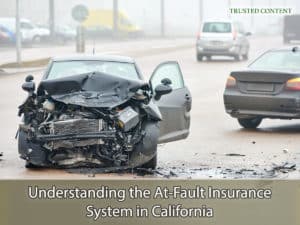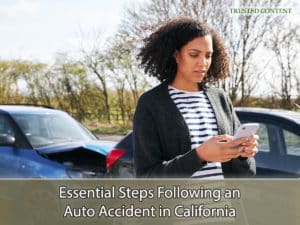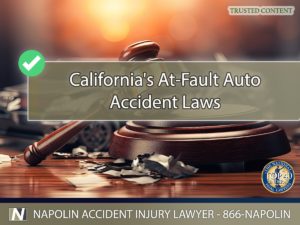California’s At-Fault Auto Accident Laws: What You Need to Know
In California, the approach to auto accidents is distinct and requires specific understanding, especially for those who find themselves in the unfortunate position of being involved in one. The state follows an at-fault insurance system, which significantly influences how compensation claims are handled. This article aims to provide a comprehensive overview of the at-fault system, offering essential knowledge to California residents and drivers.

Understanding the At-Fault Insurance System in California
Understanding the At-Fault Insurance System in California
California's at-fault system places the financial responsibility for accidents on the party deemed to be at fault. This system contrasts with no-fault states, where each party's insurance covers their own losses regardless of who caused the accident. In California, the driver who is found responsible for the accident is liable for the damages incurred by other parties. This includes medical expenses, property damage, and other related costs. Understanding this system is crucial for drivers in California, as it affects the way insurance claims are processed and how liability is determined in the event of an accident.
Proving Liability in Auto Accidents
Proving liability is a critical aspect of auto accident claims in California. The burden of proof lies with the claimant, who must demonstrate that the other party was at fault. This process typically involves gathering various forms of evidence, such as police reports, eyewitness testimonies, photographs of the accident scene, and medical records. These pieces of evidence are essential in constructing a clear picture of the events leading up to the accident and establishing the responsible party. An experienced attorney can be invaluable in this process, helping to gather and present evidence effectively.
The Role of Comparative Negligence in California
California employs a pure comparative negligence rule in auto accidents. This rule allows for the distribution of fault among all involved parties. For instance, if a party is found to be 30% responsible for an accident, they would be liable for 30% of the total damages. This system ensures a fairer distribution of liability and compensation, reflecting each party's contribution to the accident. It's important for accident victims to understand this aspect of California law, as it can significantly impact the compensation they receive.
California State-Mandated Auto Insurance Requirements
Despite being an at-fault state, California mandates that all drivers carry liability insurance. This insurance must meet minimum state requirements, including coverage for bodily injuries and property damage. Specifically, drivers are required to have insurance coverage of at least $15,000 for bodily injury or death to one person, $30,000 for injury or death to more than one person, and $5,000 for property damage. These requirements are designed to ensure that drivers have some level of financial protection in the event of an accident.

Essential Steps Following an Auto Accident in California
Essential Steps Following an Auto Accident in California
After being involved in an auto accident in California, there are several crucial steps one should take. Firstly, ensuring the safety of all parties and seeking medical attention is paramount. Following this, it is important to file a police report and gather as much evidence as possible at the scene, including photographs and contact information of witnesses. These initial steps are vital in building a strong foundation for any potential insurance claim or legal action. Additionally, consulting with a legal expert as soon as possible can provide guidance and help protect one's rights throughout the process.
Seeking Fair Compensation for Damages in Auto Accidents
Victims of auto accidents in California have the right to seek compensation for various damages. This includes medical expenses, lost wages, and non-economic damages such as pain and suffering. The process of claiming these damages often involves negotiating with insurance companies or, in some cases, filing a lawsuit. An experienced personal injury lawyer can play a crucial role in this process, advocating on behalf of the victim to ensure they receive fair compensation. They can help navigate the complexities of the legal system and insurance policies, providing support and expertise at every step.

California's At-Fault Auto Accident Laws- What You Need to Know
California's At-Fault Auto Accident Laws: What You Need to Know
Understanding the nuances of California's auto accident laws is essential for anyone involved in such incidents. If you find yourself in need of guidance or representation following an auto accident, Napolin Accident Injury Lawyer is here to help. We offer a free consultation to discuss your case and explore your options. With our extensive experience in auto accident litigation, we are dedicated to providing personalized legal support to ensure you receive the compensation you deserve. Contact us at (866)-NAPOLIN to take the first step towards securing your rights and achieving the best possible outcome for your situation.
- Safely and Legally Navigating Parking Lots in California - July 15, 2024
- Navigating the Aftermath of a Highway Auto Accident in California - July 15, 2024
- An Overview of California's Commercial Truck Insurance Laws - July 15, 2024
